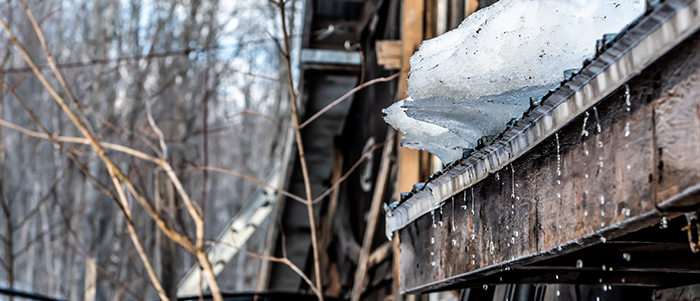
Every winter, your business and your employees face several safety risks, including winter driving, or working outside in the cold.In Canada, heavy snowfall is common, and if left unattended, snow can severely damage your property.A large buildup of snow and ice can turn into an ice dam, which forms when water from a full or partial blanket of melting snow is unable to drain off to the side.
This causes the ice to grow along the edge of the roof, and it can leak into walls, ceilings, and other areas.The damage that can result from an ice dam can be devastating, which is why it’s important to perform routine maintenance of your property to ensure it’s ready for all that winter may bring.To help you get your roof ready for severe weather, here are some helpful tips.
Removing snow buildup from your roof A structural engineer can help you determine whether your roof can handle the weight of heavy snowfall.Generally, experts recommend that you remove snow when it’s more than 20 cm (8 in) thick.If you choose to remove the snow yourself, keep the following safety tips in mind: Avoid using sharp tools like axes or picks – opt for rubber mallets to break up ice.
Avoid using extreme heat, like a welding torch, because this could damage your roof.When using wood or plastic shovels, stop at least 10 cm (4 in) above the surface.Be careful when using de-icing salt – it can speed up corrosion of your roof’s metal components.
Map out areas where electrical wiring is installed so you can avoid them.Make sure there is proper water drainage.Before and during the snow removal process, make sure you set up a safety perimeter, so others know to avoid walking near your building.
If an accident occurs, make sure an incident report is filled out with the right contact information, including the date, details of the accident, and the signature of a witness.It’s important to note what footwear the injured person was wearing and include dated photos of the accident.Hiring a professional You may feel more comfortable hiring a contractor to remove the snow from your roof.
If you choose this route, make sure to ask for a written contract or service agreement that outlines roles, responsibilities, and the work that needs to be done, and ask for a certificate of insurance.This can help verify their reputation and your broker can confirm if their coverage is suitable.What are roof coverings and how can they can help in the winter? A roof covering can help prevent damage by protecting against severe winter weather conditions.
Here are a few types of roof coverings to consider: Built-up roof coverings: These are made of reinforced fabric and asphalt, finished with a top layer of stone or gravel.Shingle coverings: This type of covering is made with flat or curved tiles that interlock in a way that channels water off a pitched roof.Modified bitumen roof coverings: These coverings are built for flat roofs.
They’re made of base and cap sheet membranes and topped with coloured granules, similar to gravel on built-up asphalt.Single-ply membrane roof coverings: These are flexible sheets of synthetic polymer that can be divided into two main types – thermoplastics and synthetic rubber.Ethylene Propylene Diene Monomer (EPDM) and Thermoplastic Polyolefin (TPO) are examples.
EPDM roofing expands and contracts with temperature changes.Get your small business ready for the winter with the right coverage
Your business doesn’t stop in the winter, and the right coverage can help make sure you’re prepared for the unexpected.Learn more about key coverages to help protect your property and avoid costly losses by visiting our business insurance page.
Publisher: TruShield Insurance








